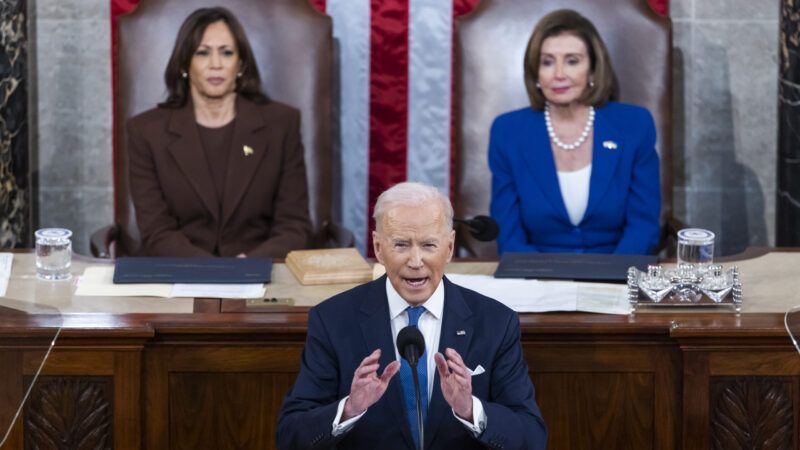Biden's Attack on 'Ghost Guns' Fits a Pattern of Lawless Firearm Regulation
The president and his predecessor both tried to impose gun control by executive fiat.

During his 2022 State of the Union address, President Joe Biden promised he would "keep doing everything in my power" to eliminate "ghost guns you can buy online and make at home." But Biden actually tried to do something that was not in his power: He purported to ban that previously legal business by administrative decree, provoking a preliminary injunction that was expanded last week.
In a rule that took effect last August, the Bureau of Alcohol, Tobacco, Firearms, and Explosives (ATF) rewrote federal law in a vain attempt to prevent Americans from making their own guns. That rule is part of a pattern: The Biden and Trump administrations both have sought to unilaterally impose new gun controls, reversing longstanding ATF positions while defying the rule of law and the separation of powers.
Two Texas gun owners, a company that sells gun parts, and the Firearms Policy Coalition challenged the ATF rule in a lawsuit they filed on August 11 in the U.S. District Court for the Northern District of Texas. Three weeks later, U.S. District Judge Reed O'Connor concluded that the plaintiffs were right that the ATF had exceeded its statutory authority.
Federal law defines a "firearm" as "any weapon" that "will or is designed to or may readily be converted to expel a projectile by the action of an explosive." The definition also includes "the frame or receiver of any such weapon," meaning "the primary structural component of a firearm to which fire control components are attached."
From 1978 to 2022, the ATF's definition of firearms tracked that language by excluding partially manufactured frames or receivers. The new rule, O'Connor notes, "departs from nearly 45 years of ATF precedent" by classifying such parts as firearms when they are "designed to or may readily be" converted into frames or receivers.
The rule goes even further by treating parts kits as firearms when they are "designed to or may readily be" used to assemble a gun. Both of those extensions, O'Connor ruled, are inconsistent with the "plain language" of the law.
The ATF's about-face in service of Biden's gun control agenda threatened to destroy an industry that catered to DIY gun makers based on the agency's previous interpretation of the law. Tactical Machining, one of the original plaintiffs in this lawsuit, said the agency's edict, which transformed legal businesses into criminal enterprises, would wipe out more than 90 percent of its revenue.
Such bureaucratic reversals can also turn law-abiding gun owners into felons overnight. Consider the Trump administration's equally arbitrary ban on bump stocks, accessories that facilitate a rapid firing technique in which a rifle moves back and forth, repeatedly activating the trigger by bumping it against a stationary finger.
When that ban took effect in March 2019, gun owners who had legally purchased bump stocks were suddenly committing felonies punishable by a $250,000 fine and up to 10 years in federal prison, even though the law had not changed. In January, the U.S. Court of Appeals for the 5th Circuit ruled that the ATF had no legal authority to impose the bump stock ban, which was based on an implausible redefinition of "machine gun" that contradicted the position that the ATF had taken for years.
A Biden administration rule that classified pistols with stabilizing braces as "short-barreled rifles," contrary to what the ATF had been saying for a decade, had a similar impact. It criminalized legal businesses and threatened customers who failed to register braced pistols with hefty fines and up to 10 years in prison.
In a federal lawsuit filed last month, Texas Attorney General Ken Paxton argues that the pistol brace rule, like the ATF's redefinitions of firearms and machine guns, was never authorized by Congress. Whatever you might think about the merits of these policies, the system of government designed by the Framers does not allow the executive branch to legislate under the guise of regulation.
© Copyright 2023 by Creators Syndicate Inc.


Show Comments (85)